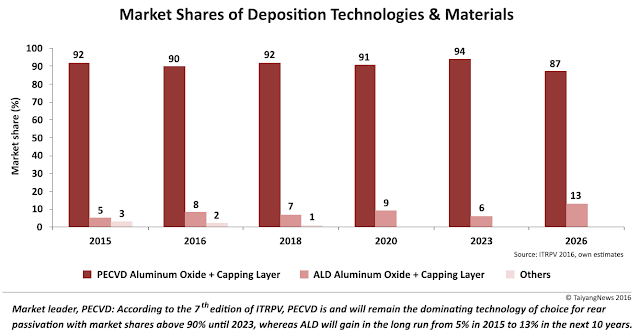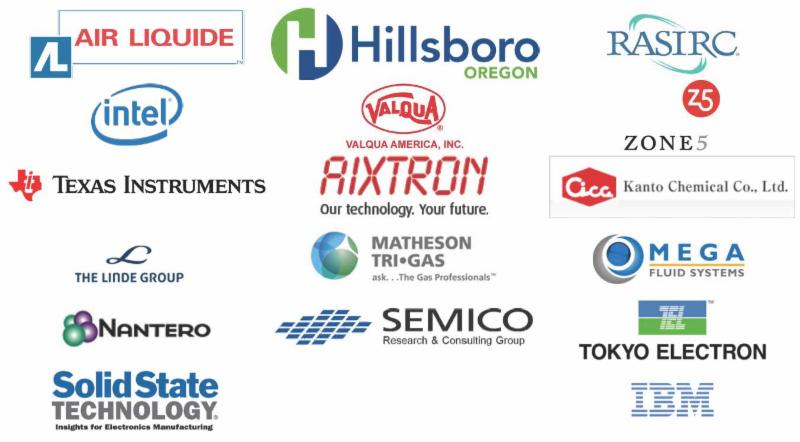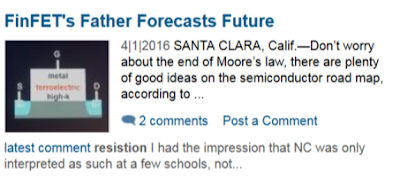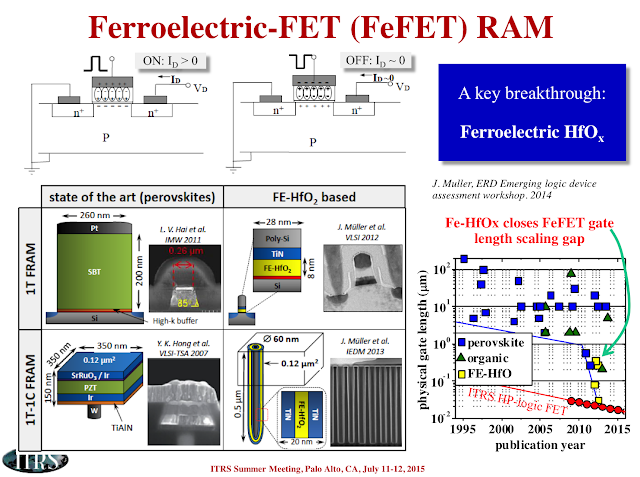The semiconductor industry is pushing for Atomic Layer Etching of (ALE) to support CMOS scaling beyond 10 nm. Untill now the main focus have been on plasma activated processes that many times result in anisotrpic etching or non conformal etching like an ALD guy would say. Recently however, Prof. S.M George and his group at Boulder Colorado has presented paths to thermally activated processes for self limited etching using Sn(acac)2 and HF or HF-pyridine. Here, they have progressed further and can actually basically run the most well known ALD precursor - TMA for growing Al2O3 - backwards by using TMA and HF vapour.
ALE 2016 Ireland, 3rd International Workshop on Atomic Layer Etching, 24th – 25th July 2016, Dublin, Ireland: http://ald2016.com/atomic-layer-etching-workshop-overview/
It will be interesting to see if additional important high-k materials for logic and memory devices such as HfO2 and ZrO2 can be etched using a similar approach. Prof. S.M. George is an invited speaker at the ALE 2016 Workshop in Dublin 24th - 25th of July 2016 and we will have a chance to learn more of this exciting work then!
Chem. Mater., Just Accepted Manuscript
DOI: 10.1021/acs.chemmater.6b00111
Trimethylaluminum (TMA, Al(CH3)3) was used as the metal precursor, together with HF, for the atomic layer etching (ALE) of Al2O3 using sequential, self-limiting thermal reactions. Al2O3 ALE using TMA demonstrates that other metal precursors, in addition to Sn(acac)2, can be employed for Al2O3 ALE. The use of TMA for Al2O3 ALE is especially interesting because TMA can also be used for Al2O3 atomic layer deposition (ALD). Quartz crystal microbalance (QCM) experiments monitored Al2O3 ALE at temperatures from 250-325°C. The Al2O3 ALE was linear versus number of HF and TMA reaction cycles. The QCM studies showed that the sequential HF and TMA reactions were self-limiting versus reactant exposure. The Al2O3 etching rates increased at higher temperatures. The QCM analysis measured a mass change per cycle (MCPC) of -15.9 ng/(cm2 cycle) at 300°C. This MCPC corresponds to an Al2O3 etch rate of 0.51 Å/cycle. X-ray reflectivity and spectroscopic ellipsometry analyses confirmed the linear removal of Al2O3 and etching rates. Fourier transform infrared spectroscopy measurements monitored Al2O3 ALE by observing the loss of infrared absorbance from Al-O stretching vibrations. Surface intermediates were also identified after the HF and TMA exposures. Al2O3 ALE with TMA is believed to occur by the reaction: Al2O3 + 4Al(CH3)3 + 6HF → 6AlF(CH3)2 + 3H2O. The proposed mechanism involves fluorination and ligand-exchange reactions. The HF exposure fluorinates the Al2O3 surface and forms an AlF3 layer and H2O as a volatile reaction product. During the ligand-exchange transmetalation reaction, TMA accepts F from the AlF3 layer and donates CH3 to produce volatile AlF(CH3)2 reaction products. Additional metal precursors for thermal ALE may be possible based on similar fluorination and ligand-exchange reactions.
Trimethylaluminum as the Metal Precursor for the Atomic Layer Etching of Al2O3 Using Sequential, Self-Limiting Thermal Reactions
Younghee Lee, Jaime W. DuMont, and Steven M. GeorgeChem. Mater., Just Accepted Manuscript
DOI: 10.1021/acs.chemmater.6b00111
Trimethylaluminum (TMA, Al(CH3)3) was used as the metal precursor, together with HF, for the atomic layer etching (ALE) of Al2O3 using sequential, self-limiting thermal reactions. Al2O3 ALE using TMA demonstrates that other metal precursors, in addition to Sn(acac)2, can be employed for Al2O3 ALE. The use of TMA for Al2O3 ALE is especially interesting because TMA can also be used for Al2O3 atomic layer deposition (ALD). Quartz crystal microbalance (QCM) experiments monitored Al2O3 ALE at temperatures from 250-325°C. The Al2O3 ALE was linear versus number of HF and TMA reaction cycles. The QCM studies showed that the sequential HF and TMA reactions were self-limiting versus reactant exposure. The Al2O3 etching rates increased at higher temperatures. The QCM analysis measured a mass change per cycle (MCPC) of -15.9 ng/(cm2 cycle) at 300°C. This MCPC corresponds to an Al2O3 etch rate of 0.51 Å/cycle. X-ray reflectivity and spectroscopic ellipsometry analyses confirmed the linear removal of Al2O3 and etching rates. Fourier transform infrared spectroscopy measurements monitored Al2O3 ALE by observing the loss of infrared absorbance from Al-O stretching vibrations. Surface intermediates were also identified after the HF and TMA exposures. Al2O3 ALE with TMA is believed to occur by the reaction: Al2O3 + 4Al(CH3)3 + 6HF → 6AlF(CH3)2 + 3H2O. The proposed mechanism involves fluorination and ligand-exchange reactions. The HF exposure fluorinates the Al2O3 surface and forms an AlF3 layer and H2O as a volatile reaction product. During the ligand-exchange transmetalation reaction, TMA accepts F from the AlF3 layer and donates CH3 to produce volatile AlF(CH3)2 reaction products. Additional metal precursors for thermal ALE may be possible based on similar fluorination and ligand-exchange reactions.



%20(1).png)









